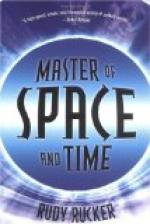With no services other than private prayers at the station on the Irish shore, the Great Eastern steamed away for the new effort on July 13, 1866. This time the principal difficulties arose within the ship. Twice the cable became tangled in the tanks and it was necessary to stop the ship while the mass was straightened out. Most of the time the “coffee-mill,” as the seamen called the paying-out machinery, ground steadily away and the cable sank into the sea. As the work progressed Field and Thomson, who had suffered so many failures in their great enterprise, watched with increasing anxiety. They were almost afraid to hope that the good fortune would continue.
Just two weeks after the Irish coast had been left behind the Great Eastern approached Newfoundland just as the shadows of night were added to those of a thick fog. On the next morning, July 28th, she steamed into Trinity Bay, where flags were flying in the little town in honor of the great accomplishment. Amid salutes and cheers the cable was landed and communication between the continents was established. Almost the first news that came over the wire was that of the signing of the treaty of peace which ended the war between Prussia and Austria.
Early in August the Great Eastern again steamed away to search for the cable broken the year before. Arriving on the spot, the grapples were thrown out and the tedious work of dragging the sea-bottom was begun. After many efforts the cable was finally secured and raised to the surface. A new section was spliced on and the ship again turned toward America. On September 7th the second cable was successfully landed, and two wires were now in operation between the continents. Thus was the great task doubly fulfilled. Once again there were public celebrations in England and America. Field received the deserved plaudits of his countrymen and Thomson was knighted in recognition of his achievements.
[Illustration: THE “GREAT EASTERN” LAYING THE ATLANTIC CABLE. 1866]
The new cables proved a success and were kept in operation for many years. Thomson’s mirror receiver had been improved until it displayed remarkable sensitiveness. Using the current from a battery placed in a lady’s thimble, a message was sent across the Atlantic through one cable and back through the other. Professor Thomson was to give to submarine telegraphy an even more remarkable instrument. The mirror instrument did not give a permanent record of the messages. The problem of devising a means of recording the messages delicate enough so that it could be operated with rapidity by the faint currents coming over a long cable was extremely difficult. But Thomson solved it with his siphon recorder. In this a small coil is suspended between the poles of a large magnet; the coil being free to turn upon its axis. When the current from the cable passes through the coil it moves, and so varies the position of the ink-siphon




